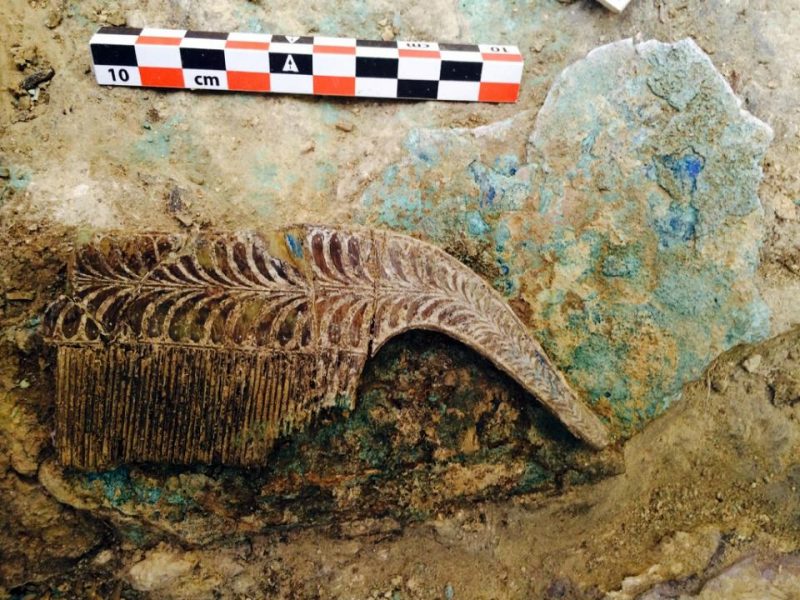An international group of archeologists, led by Jack L. Davis and Sharon R. Stocker from the University of Cincinnati, discovered a remarkably preserved bronze age tomb in south-western Greece. It is a tomb of a wealthy warrior filled with many riches. This burial site may hold the key for revealing the origin of the Greek civilization 3500 years ago and the cultural transition that happened between the Minoan and Mycenaean civilizations.
During the excavation, more than 1400 artifacts were found, carefully placed around the skeleton of the warrior. The burial was full of exquisite items like precious jewels and beads, object made of ivory, weapons, armor and beautiful vessels made of precious metals. Scientists say that this is probably the most significant discovery in mainland Greece made in the last 65 years.
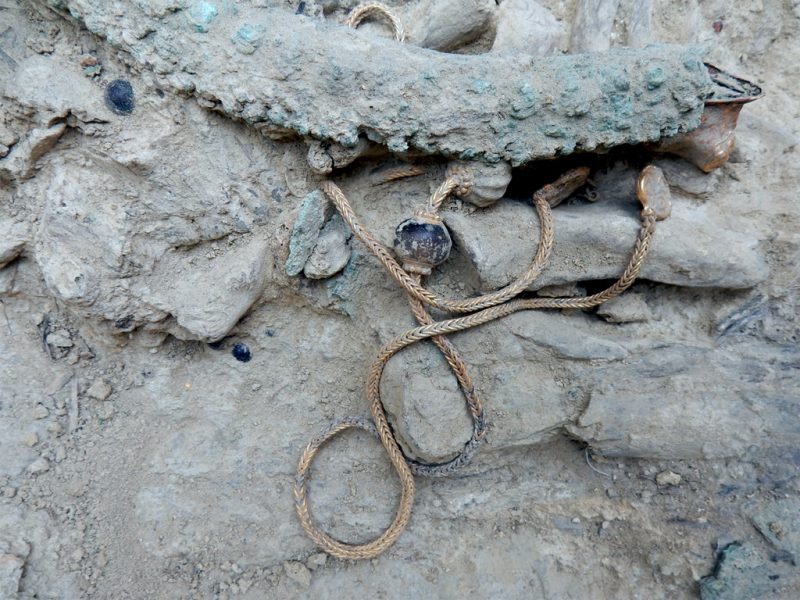
The grave was discovered in spring this year, on May 18, at the site of Pylos where the palace of Nestor is situated. Dr. Davis and Dr. Stocker have been excavating at Pylos the last 25 years. This season they were hoping to find the bronze age settlement that was surrounding the palace and find out how the ordinary people lived there.
The palace at Pylos was first discovered by Carl Blegen, also of the University of Cincinnati. On the first day of digging in 1939, Blegen discovered a large number of tablets written in the script that will be later known as Linear B, the earliest written form of the Greek language. Pylos was the home of the legendary king Nestor who is mentioned in Hommer’s Illiad as the leader of one contingent of greek forces at Troy.
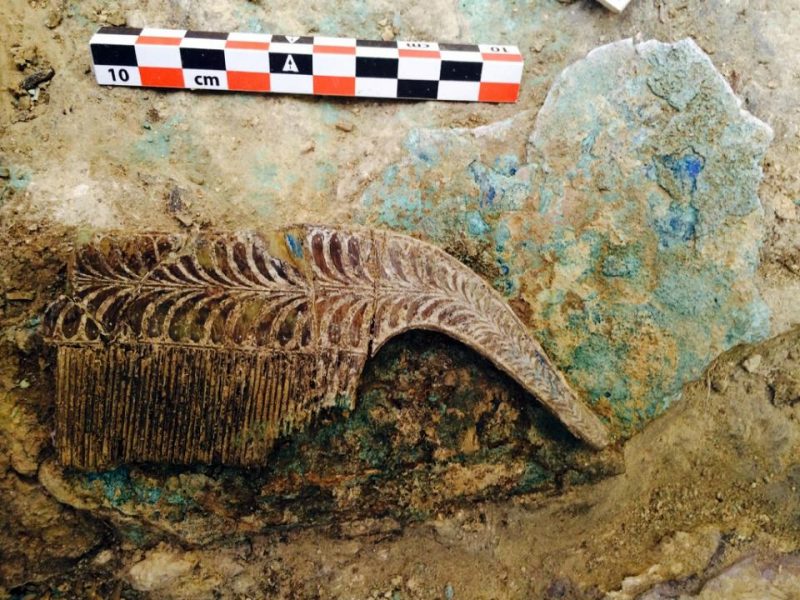
When Dr. Davis and Dr. Stocker began to dig, they found two walls meeting at right angles. Their first guess was that the walls are part of a house or a room. They were really surprised when they found out it was a grave. Dr. Davis said that he wasn’t very optimistic about this at the beginning. He thought that it is probably a medieval grave, or maybe a prehistoric one that is already robbed. Few days later, a text message from the archeologist that supervised the dig caught his attention: “Better come. Hit bronze.”
This was beyond any expectation. What started as a normal excavation turned out to be a very rare shaft grave, 5 feet deep, 4 feet wide and 8 long. Everything inside the grave was intact. Only a one-ton stone, that was probably used as a lid for the grave, had fallen in and crushed the wooden coffin. This was not a big issue because the coffin was already decayed.
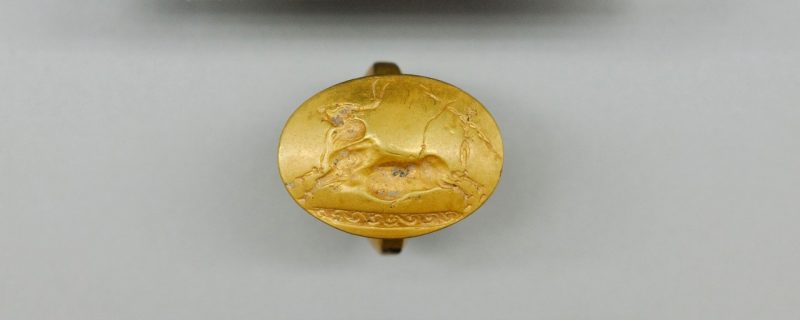
Inside they found the bones of a man that was about 30-35 years old, lying on his back. On his left side were his weapons, including a long bronze sword with an ivory hilt clad in gold and a gold-hilted dagger. On his right side, there were four amazing gold rings with very detailed Minoan carvings and also some beautiful Minoan seal stones carved with images of goddesses and bull jumpers. There was also an ivory plaque with a griffin placed between his legs. The griffin is a mythical animal that protected goddesses and kings. Because of the griffin symbols used in the burial, Dr. Davis and Dr. Stocker named this man the “griffin warrior”. It looks like the warrior also cared about his beauty. There was a bronze mirror with an ivory handle and six ivory combs inside the grave.
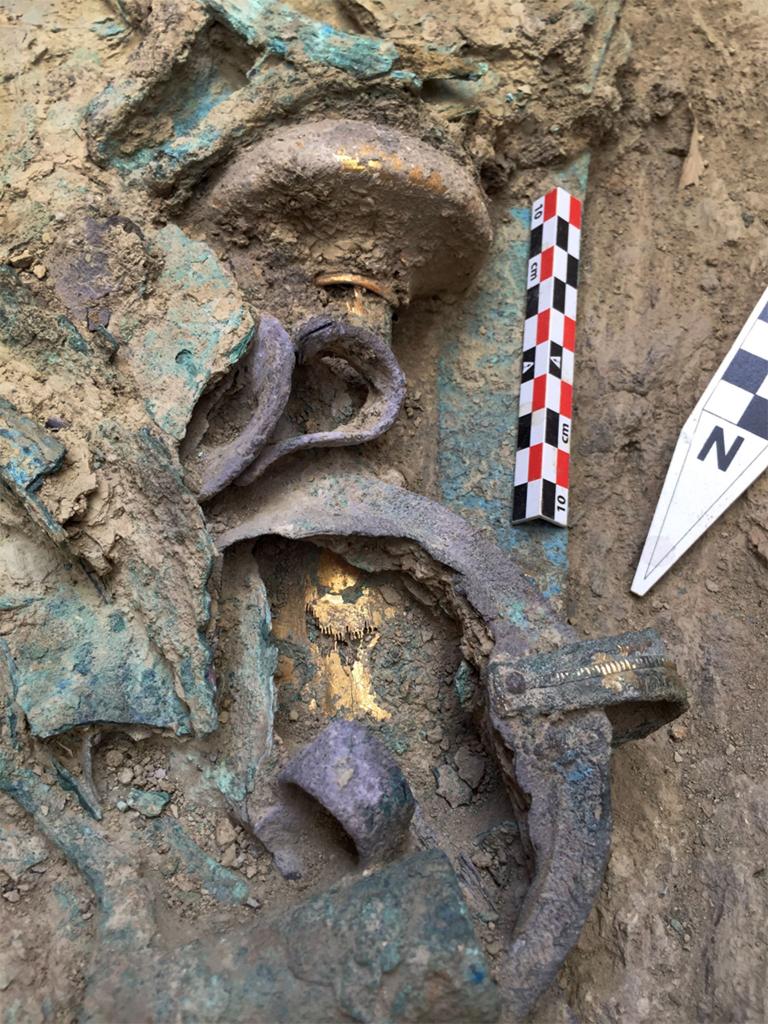
The archeologists and experts for early greek history believe that this is the grave of a prominent leader in the community of which he belonged. Maybe even the most important one. It is mentioned in the Linear B tablets that the palace of Pylos had a king or so-called “wanax”, but it can’t be known for sure if this title existed in the griffin warrior’s time.
Dating the grave represents a small problem for the team. Ancient Greek graves are usually dated by the pottery that can be found inside. In this case, there was no pottery: All the artifacts are made of silver or gold. However, some pieces of pottery that were found above and under the grave, have been dated and they are from a period known as Late Helladic II, a pottery chronology term used for objects from 1600 B.C. to 1400 B.C.
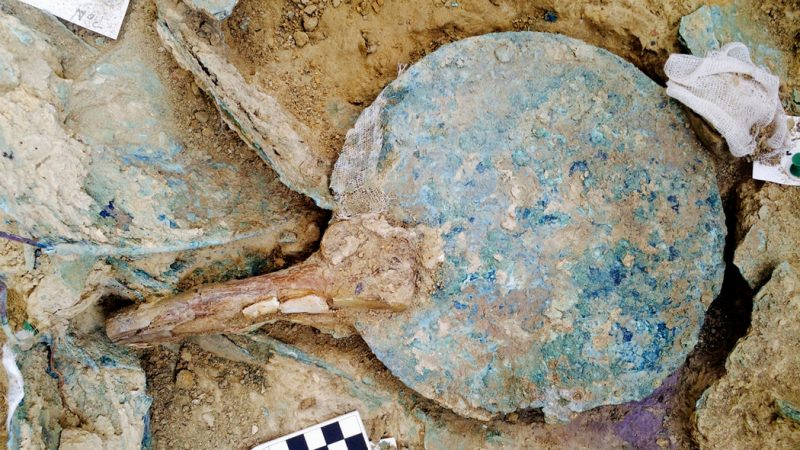
There are two significant European civilizations: The earliest European civilization is the Minoan that came Crete, but the first civilization on the mainland of Europe is the Mycenaean, the one from which the griffin warrior probably comes from.
The griffin warrior is a very amusing case: The objects found inside his grave belonged to the Minoan civilization, but he is buried in a place that belonged to the Mycenaean civilization. This puts the griffin warrior in the center of a very important cultural transfer. He lived before the palace of Pylos was build. That means that he was a witness and maybe a crucial figure in the contact (or clash), between these two amazing civilizations. The Mycenaeans used the Minoan sacred symbol of bull’s horns, and their religious was a mix of Minoan mainland Greece elements.
Further scientific research, like for example DNA analysis, may lead to the warrior’s origin. The griffin warrior and his tomb have plenty of material that will keep archeologists busy for a long time.
Source: nytimes, University of Cincinnati
